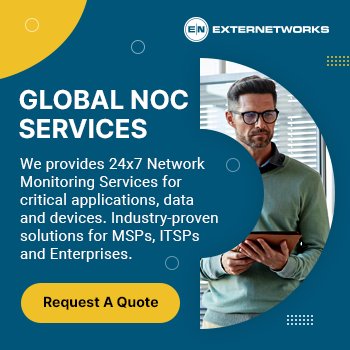Managed Services Engagement Model

Simply put, a managed services engagement model acts as a plan to outline the collaboration and service agreement between the managed service provider (MSP) and their client. An engagement model focuses on the interests and needs of the client in question. While you focus on your core business, your MSP keeps your business up and running via various managed service delivery models. The purpose of the engagement model is to manage flexibility and provide the level of managed service needs to each customer. A managed services engagement model also outlines the various pricing structures.
For managed service companies and their clients, there are various types of engagement models which are commonly used:
- Hybrid Support Model: Hybrid support models take a ‘mix and match’ approach to support. For example, a managed IT services client might require both application support and development work. Support teams may be off-shore only or split between off-shore and on-site. The MSP provides more support and takes on more responsibility in this model.
- Application Support Model(ASM): Application support refers to a technical service to help with application system issues. The support model might involve L1 support (basic help desk) or L2 (In-depth tech help). An Application Support model might also involve staff augmentation.
- Managed Service Model: Managed Service models involve the highest level of responsibility. For example, the MSP takes full responsibility for every aspect of your IT infrastructure. With the MSP taking on so much responsibility, few resources are needed from the client organization. This model usually offers the highest tiers of expert support (L3 and L4).
- Flexible Model: Many managed service providers offer flexible support that’s suitable for small businesses. For example, a flexible package might involve choosing one small aspect of IT support (at a reduced price). While the MSP works with the client via an assigned contact, there are no dedicated resources to resolve issues. Plus, this pricing model may provide a precise number of support hours per month or year.
How can you future-proof Your Business via Managed Services?
Your company’s strategic vision is all about determining where you want your business to be in the future. Naturally, businesses want to thrive and succeed. To do so, you may future proof your It via managed services; so how exactly can you do this?
- Follow tech and market trends
Managed IT services providers must relentlessly keep up to date with the latest technology and market trends. MSPs think about the software that they are using now and in the future. MSP offerings support high-level project management; have configurable rate models and prepayment, and offer outsourcing models for larger companies. MSPs are also equipped to manage multiple time zones. A managed service provider will have close links to the latest RMM platforms. (I’m re-writing to make this for the client and not the MSP.)
- Determine the most valuable services
To remain future-proof, MSPs must focus on the services which offer the most value to their clients. Cybersecurity services are imperative to modern businesses. Big Data is also very important to contemporary organizations. Over the next few years, businesses will continue to use analytics to their advantage. MSPs will thrive if they can support their clients to collect and use this data. Information technology and cloud computing develop, it’s virtually essential for MSPs to operate on or support the cloud. These are all advantages for clients looking to work with an MSP.
- Quality improvement methodologies
MSPs focus on quality and improvement methodologies. Quality improvement is a formal and systematic approach to analyzing your work and improving your performance. Common Quality Improvement goals might include creating a culture that values quality, analyzing data, and communicating your outcomes. When you focus on quality improvement methodologies, you’ll find that your MSP also achieves improved risk management.
What are the Benefits of a Managed Services Engagement Model?
There’s no one fits all solution when it comes to managed services. With this in mind, offering different types of engagement models allows your MSP to cater to a wide range of companies and needs. It’s useful for managed IT services to offer different tiers for their support. Separating your support into levels allows you to quickly fix small issues, create timelines for more significant problems, and strategically address the needs of your clients. Offering different engagement models means that clients get the flexibility they need to meet their goals.
What are the challenges of a Managed Services Engagement Model?
The biggest challenge of a managed service engagement model is project management. It’s about balancing quality with cost, time, and scope. MSPs offer a wide range of services to many different clients, all using different engagement models. To deliver a high-quality service, it’s easy to see why strategic project management is so important.
Pricing can be challenging when running many varied aspects of one service. Due to this, many MSPs adopt different pricing models. Pricing models are available according to fixed-price projects, managed capacity, and projects judged on material and time.
Managed capacity means that the customer purchases a pre-set amount of ‘person-hours’ from an MSP at a predetermined rate. A managed capacity model provides a mix of project approaches and traditional staffing. (Should this also be above in the different pricing models section??)
Managed Capacity Model
The managed capacity model is a form of service management that relies on automation, self-service tools, and human intervention. The goal of this approach is to reduce costs while maintaining quality levels.
Managed capacity models are based on the premise that the best way to manage demand is to anticipate it. Companies can better plan staffing requirements, allocate resources efficiently, and avoid costly disruptions by anticipating demand.
Managed Services from ExterNetworks
With ExterNetworks, your business will enjoy the deployment of new services and the latest technologies to meet your business demands with the right amount of support that you require. With ExterNetworks, you’ll also get a handle on controlling your IT costs. Our team will form a custom relationship with you to help you better manage your business.
Want to explore how we can form a unique relationship? We’ll help you better manage your business. Let’s schedule a 15-minute call to see how we can help your business.
Let’s chat: Schedule Your 15-minute call






